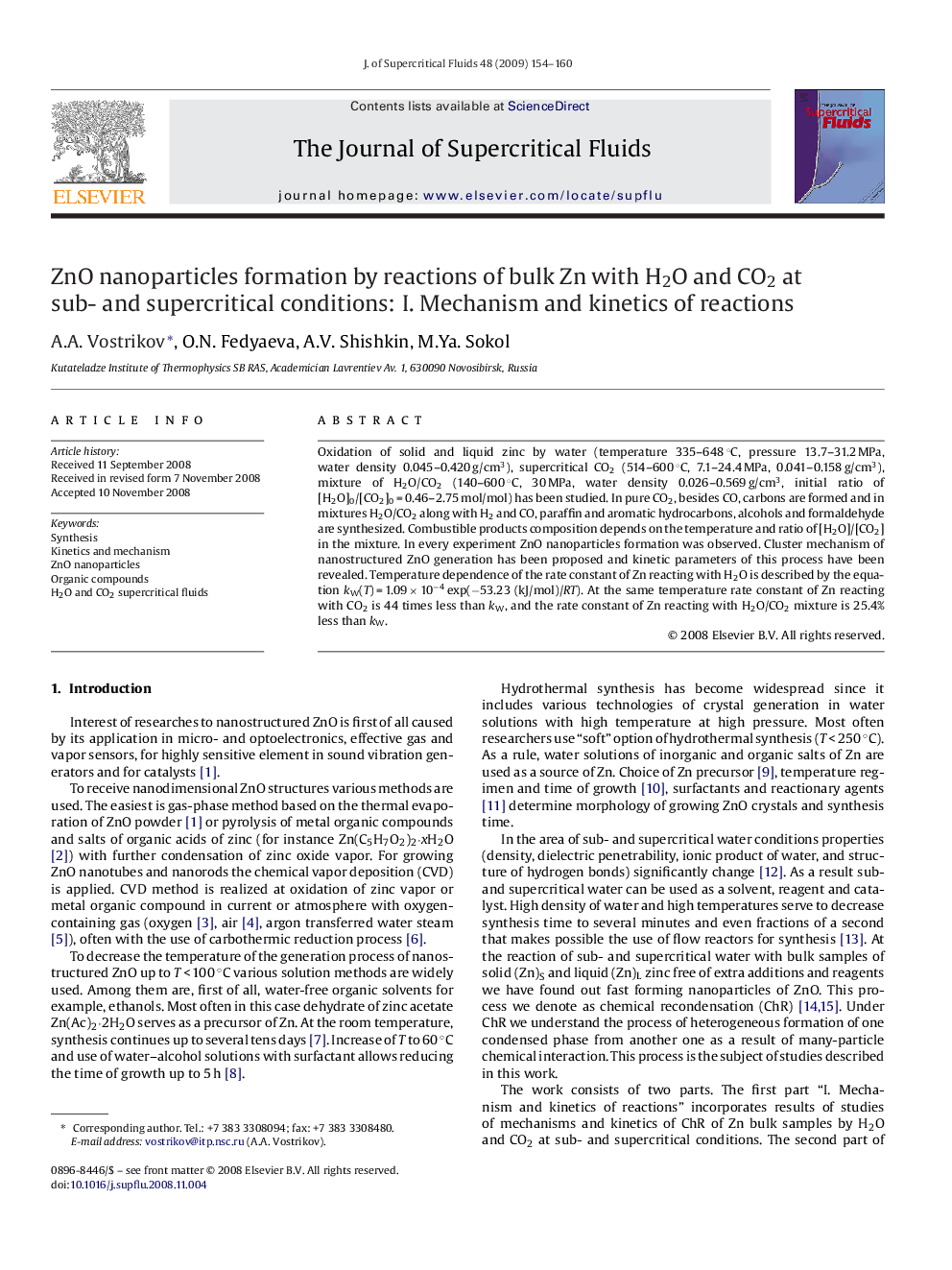| Article ID | Journal | Published Year | Pages | File Type |
|---|---|---|---|---|
| 231684 | The Journal of Supercritical Fluids | 2009 | 7 Pages |
Oxidation of solid and liquid zinc by water (temperature 335–648 °C, pressure 13.7–31.2 MPa, water density 0.045–0.420 g/cm3), supercritical CO2 (514–600 °C, 7.1–24.4 MPa, 0.041–0.158 g/cm3), mixture of H2O/CO2 (140–600 °C, 30 MPa, water density 0.026–0.569 g/cm3, initial ratio of [H2O]0/[CO2]0 = 0.46–2.75 mol/mol) has been studied. In pure CO2, besides CO, carbons are formed and in mixtures H2O/CO2 along with H2 and CO, paraffin and aromatic hydrocarbons, alcohols and formaldehyde are synthesized. Combustible products composition depends on the temperature and ratio of [H2O]/[CO2] in the mixture. In every experiment ZnO nanoparticles formation was observed. Cluster mechanism of nanostructured ZnO generation has been proposed and kinetic parameters of this process have been revealed. Temperature dependence of the rate constant of Zn reacting with H2O is described by the equation kW(T) = 1.09 × 10−4 exp(−53.23 (kJ/mol)/RT). At the same temperature rate constant of Zn reacting with CO2 is 44 times less than kW, and the rate constant of Zn reacting with H2O/CO2 mixture is 25.4% less than kW.
Graphical abstractOxidation of zinc by water, CO2, mixture of H2O/CO2 at sub- and supercritical parameters has been studied. Cluster mechanism of nanostructured ZnO formation has been proposed and kinetic parameters of this process have been revealed. Temperature dependence of the rate constant of Zn reacting with H2O is described by the equation kW(T) = 1.09 × 10−4 exp(−53.23 × 103/RT). At the same temperature rate constant of Zn reacting with CO2 is 44 times less than kW, and the rate constant of Zn reacting with H2O/CO2 mixture is 25.4% less than kW.Figure optionsDownload full-size imageDownload as PowerPoint slide
